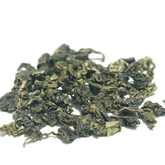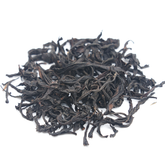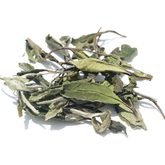Why Is My Tea Bitter? Why Your Brew Turns Bitter and How to Avoid It
I still remember my first time brewing green tea—I was so excited and eager, but one sip of that intensely bitter brew completely shocked me. At the time, I blamed the tea leaves themselves, thinking they were low quality. Later, I learned the real issue was my brewing method. Take those Longjing green tea bags sold in U.S. supermarkets, for example: the package clearly says "80°C water temperature," yet 99% of people just nuke a mug of boiling water in the microwave. No wonder the tea turns out unbearably bitter and practically undrinkable!
"Dr. Sarah Wilson, chief advisor of the Tea Association of the USA, highlighted this in a 2022 interview. Her team’s lab tests showed that when brewing the exact same batch of green tea leaves with 100°C water for 5 minutes, tannin levels spiked nearly triple compared to using 80°C water for just 2 minutes—and the flavor turned harsh and bitter as a result."
"My new students make the same mistake—they’ll toss tea leaves into a thermos, pour boiling water over them, and let it steep all day for ‘convenience.’ Every sip ends up tasting like ‘bitter melon juice,’ and they assume that’s just how tea is. Then they visit a traditional Chinese tea shop, where the owner brews the same leaves at 75°C, and suddenly the tea tastes sweet, floral, and utterly delightfu Here’s the truth: 85% of tea’s bitterness issues come from brewing mistakes, not poor tea quality. Read this guide to uncover why your tea turns bitter and learn step-by-step how to brew it properly—so every sip stays smooth and enjoyable."
Here’s the truth: 85% of tea’s bitterness issues come from brewing mistakes, not poor tea quality. Read this guide to uncover why your tea turns bitter and learn step-by-step how to brew it properly—so every sip stays smooth and enjoyable."
The Root Cause of Bitterness in Tea
Tea’s bitterness comes from three key compounds working together: caffeine, tea polyphenols (like EGCG), and tea saponins. Caffeine is the biggest culprit—it floods your brew when exposed to high temperatures. Next, tea polyphenols add a “bitterness hidden in astringency” when unoxidized, but this sharpness mellows once they oxidize. Tea saponins, meanwhile, act as stealthy bitter agents, released when they break down surface cells. Together, these compounds determine just how bitter or smooth your cup will taste.
| Component | Chemical Profile | Source & Release Triggers | Bitterness Characteristics | Control Strategies |
| Caffeine |
Alkaloid, heat-resistant, highly soluble in hot water; Low taste threshold (150ppm) |
Highest in young tea buds (2-5% dry weight); Rapid release above 80°C |
Directly activates bitter taste receptors (TRPV1 channels in humans), pure bitterness without aftertaste |
Brew green tea ≤80°C; Rinse black tea with boiling water first |
| Tea Polyphenols (EGCG) |
Catechins (unoxidized: bitter/astringent); Convert to sweet theaflavins when oxidized |
70-80% in green tea; Over-extracted by long steeping/high heat |
Astringency amplifies bitterness; Synergizes with caffeine (+40% bitterness) |
Cold brew (4°C/12h); Use young "one bud one leaf" tea (30% lower EGCG) |
| Tea Saponins | Triterpenoid glycosides, foam-generating; Ultra-low taste threshold (50ppm) |
Concentrated in leaf epidermis; Released by broken leaves/boiling water |
Bitter foam traps bitterness; "Explosive release" after epidermal damage |
Use ultra-fine strainers (<0.5mm pores); Quickly remove leaves after brewing |
Bitterness from Brewing Mistakes
Tea’s harsh taste often stems from improper brewing habits. Common errors include water that’s too hot, steeping too long, using too much tea, or using the wrong teaware. These mistakes trigger a heavy release of caffeine—tea’s primary bitter compound—overwhelming your cup. Check out the table below to avoid these pitfalls, minimize bitterness, and keep your tea’s natural aroma intact.
Check out the table below to avoid these pitfalls, minimize bitterness, and keep your tea’s natural aroma intact.
| Reason | Mitigation Measure | Practical Tip |
|---|---|---|
| Water Too Hot | Use water at the right temperature | Green tea at 75°C, Oolong at 80-85°C, Black tea at 100°C |
| Steeping Too Long | Control steeping duration precisely | Generally, green tea for under 2 minutes, Oolong for 3-4 minutes |
| Too Much Tea | Measure leaves accurately | About 3-5 grams per 150ml of water |
| Wrong Tea Choice | Select based on taste preference and bitterness level | Lighter teas like white for those sensitive to bitterness |
| Poor Water Quality | Brew with purified or filtered water | Enhance taste purity by reducing mineral interference |
Proper Brewing Methods for Common Tea Types
When brewing any type of tea or using any teaware, follow these points to avoid bitterness: Lower-fermented teas require cooler water—for example, 80-85°C for green tea to preserve its freshness, while black tea (fully fermented) should use 100°C boiling water. Start with shorter steeping times to prevent over-extracting caffeine and tea polyphenols; if the flavor is too weak, gradually increase the steeping time. Choose teaware with strong heat dissipation, like lidded bowls (gaiwan) or cups that separate tea leaves from water. In short: cooler water, less tea leaves, and shorter steeping times are key.

| Tea Type | Water Temp | Water Ratio | Steeping Time | Best Tools | Tips to Reduce Bitterness |
|---|---|---|---|---|---|
| Green Tea | 80-85°C | 1:50 (tea:water) | First steep: 20 sec, +5 sec each round | Glass cup/Gaiwan (lidded bowl) | Cool boiling water for 2 mins; never cover the cup. |
| White Tea | 90-95°C | 1:30 | First steep: 15 sec, +10 sec each round | Gaiwan/Clay teapot | Use slightly cooler water for young tea; rinse aged tea with boiling water first. |
| Oolong Tea | 95-100°C | 1:20 | First steep: 10 sec, +5 sec each round | Yixing clay teapot/Gaiwan | Use boiling water, pour fast. Extend steeping after the 4th round (30+ sec). |
| Black Tea | 85-90°C | 1:40 | First steep: 15 sec, +10 sec each round | Porcelain teapot/Coffee dripper | Pour water gently along the cup’s edge—avoid hitting leaves directly. |
| Dark Tea (e.g., Pu-erh) | 100°C | 1:20 | First steep: 10 sec (rinse), then 20+ sec | Yixing teapot/Boiling kettle | Rinse aged tea twice; remove from heat immediately when boiling. |
How to Choose Less Bitter Teas?
Some types of tea are naturally less prone to bitterness. If you’re still mastering brewing skills, focus on these tips when selecting teas:
Prioritize high-quality teas with properly matured young leaves and well-processed techniques. Teas harvested in spring tend to be sweeter and smoother, while summer-harvested teas are more prone to bitterness. Avoid low-grade broken tea leaves (tea dust/fannings), as their shattered leaves release bitter compounds too quickly during brewing.
Black tea and white tea, with their moderate fermentation, have partially oxidized catechins, resulting in a mellower taste. Ripe pu-erh, thanks to extended fermentation, has most tea polyphenols broken down, leaving almost no bitterness.If highly sensitive to caffeine, opt for herbal teas (caffeine-free), but note they’re not traditional teas.
Top 5 Common Myths About Bitter Tea
「All Tea Requires Boiling Water」
Myth: Believing high heat "unlocks flavor," leading to over-extracted bitterness in low-temperature teas like green or white tea.
Truth: Lower-fermentation teas (e.g., green tea) need cooler water (80-85°C). Boiling water ruptures delicate leaf cells, releasing excess caffeine and tea polyphenols.
「Longer Steeping = Stronger, Better Flavor」
Myth: Equating "strong" with "flavorful," especially with black or oolong tea, which turns harsh when over-steeped.
Truth: Start with quick infusions (e.g., 10 seconds for oolong), then gradually extend steeping time by 5-10 seconds per round to balance flavor and astringency.
「Bitterness Means Low-Quality Tea」
Myth: Blaming tea quality while ignoring brewing errors.
Truth: Even premium tea can taste bitter from overheated water, pouring water directly onto leaves, or poor heat-dispersing tools (e.g., sealed glass cups that trap steam).
「Cold Brew Is Just for Iced Tea」
Myth: Treating cold brew as a summer hack with no bitterness-reducing benefits.
Truth: Slow steeping in cold water (4°C, refrigerated 6-8 hours) cuts 80% of bitter compounds, ideal for green/white teas to highlight their natural sweetness.
「Adding Sugar/Milk Is the Only Fix for Bitterness」
Myth: Relying on additives to mask bitterness rather than adjusting brewing methods.
Truth: Lower water temps (e.g., 85°C for black tea), reduce leaf quantity (1g tea : 50ml water), or pour water along the cup’s edge—not directly on leaves—to fix bitterness naturally.
SEE MORE ABOUT CHINESE TEAS
If you have questions about selecting tea:
Learn-more-about-chinese-tea
If you have questions about the benefits of tea:
Health-benefits-of-chinese-tea
If you have questions about brewing tea:
How-to-brew-loose-leaf-tea






